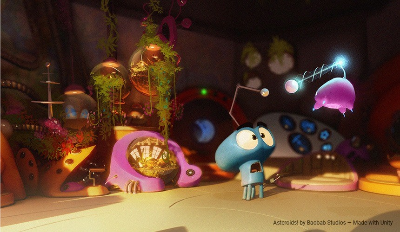Spatial visualization is a skill that is useful for problem solving, and is a huge indicator of success in STEM courses. It is often measured using a test consisting of questions that require one to manipulate 2D or 3D objects in their head. Despite the importance of these skills, spatial visualization is not often emphasized in early childhood education. The article “Spatial Intelligence - What is it & 13 Ways to Improve It” talks about ways children can improve their spatial abilities. Something that really stood out was the exposure to map reading. The article states that “Map reading can help children acquire abstract concepts of space and the ability to think systematically about spatial relationships that are not otherwise experienced directly in the physical world.” This idea of there being spatial relationships that are unexplored in the physical world is where virtual and augmented reality can change education.
Researchers at Murdoch and Curtin University investigated how the use of a desktop virtual reality learning environment impacted those who were lacking these skills. Students that had low spatial reasoning skills that used the desktop virtual reality learning saw a significant improvement in those skills. Desktop virtual reality is convenient and accessible, so it can be an efficient solution to this problem. Researchers at the Vienna Univerity of Technology wanted to see if virtual reality training could improve spatial abilities among students. They did not find any significant improvement, while they did mention that “building up spatial knowledge could be achieved to active and passive exploration.” This refers to exploration that is done over time. The study also found that virtual reality could be used to test these skills, and generally, when one is repeatedly tested for a skill, they practice more, resulting in overall improvement.
Spatial reasoning skills can best be improved through practice and exploration. Virtual and augmented reality can facilitate this process by allowing people to explore and manipulate objects that they would otherwise require hefty resources. A platform like Unity allows the developer to develop 2-dimensional or 3-dimensional games. To do this, the developer has to think about spatial concepts to figure out what works best for their game; a skill also associated with map reading, improving their spatial abilities. In doing this, they may also create a product that helps inspire others to get involved in virtual reality, which would result in them being able to improve their spatial reasoning skills!
Authored by Nivita Reddy
Duenser, Andreas & Kaufmann, Hannes & Steinbügl, Karin & Glück, Judith. “Virtual and Augmented Reality as Spatial Ability Training Tools.” ACM International Conference Proceeding Series, Jan. 2006, https://www.researchgate.net/publication/216867634_Virtual_and_Augmented_Reality_as_Spatial_Ability_Training_Tools.
“Gaming Archives.” ExtremeTech, www.extremetech.com/gaming.
Lee, Elinda Ai-Lim, and Kok Wai Wong. “Learning with Desktop Virtual Reality: Low Spatial Ability Learners Are More Positively Affected.” Computers & Education, Pergamon, 31 July 2014, www.sciencedirect.com/science/article/abs/pii/S0360131514001614.
Li, Author Pamela. “Spatial Intelligence - What It Is & 13 Ways to Improve It.” Parenting For Brain, 15 Jan. 2021, www.parentingforbrain.com/visual-spatial-reasoning-skills-stem/.
Meraki Studio. “Decoding Desktop Virtual Reality (VR) And Mobile Virtual Reality (VR): Meraki.” Medium, Meraki Studio, 1 Nov. 2017, medium.com/meraki-studio/decoding-desktop-virtual-reality-vr-and-mobile-virtual-reality-vr-7259f9b458c8.
“Spatial Reasoning Tests.” AssessmentDay, www.assessmentday.co.uk/spatial-reasoning.htm.
Technologies, Unity. Unity, unity.com/.



